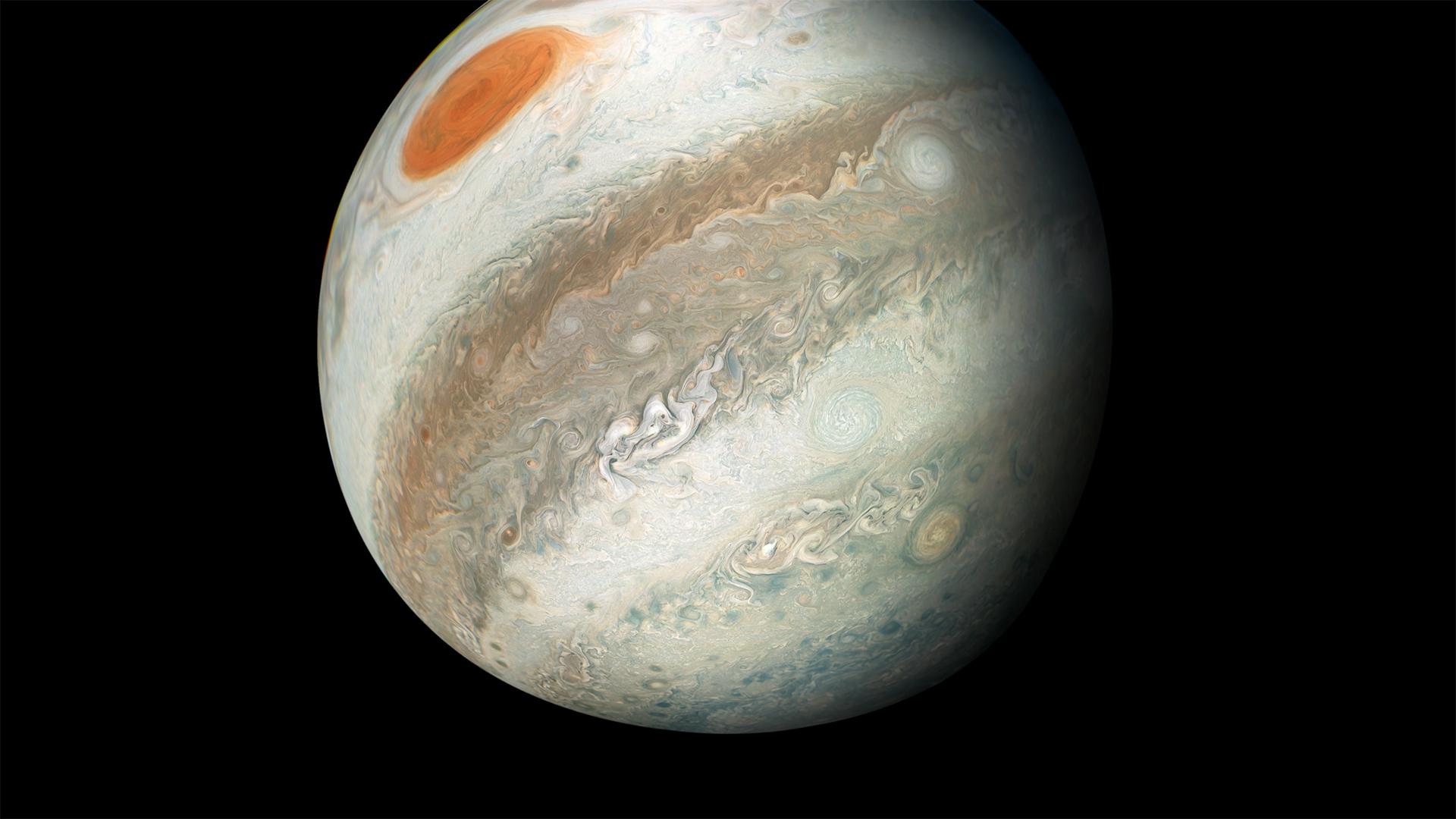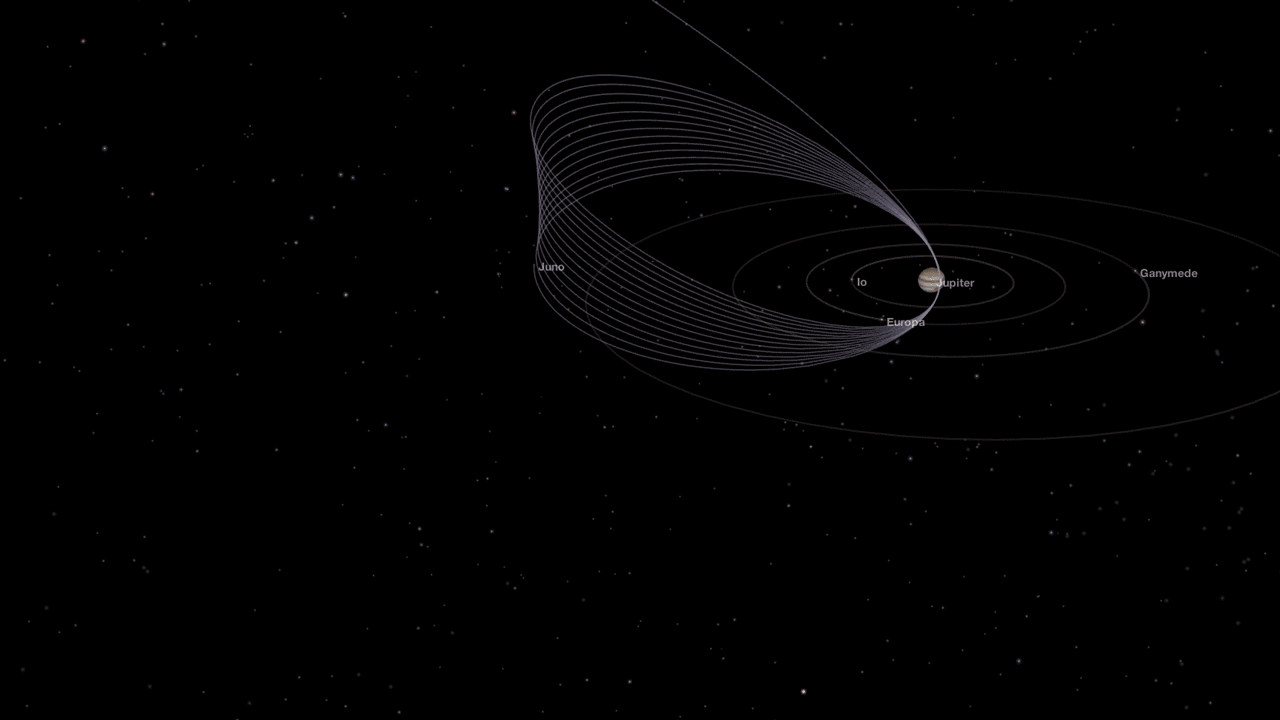NASA Extends Juno Jupiter Mission Until July 2021

NASA's Juno spacecraft will continue studying Jupiter for another three years.
The $1.1 billion Juno mission has been extended through at least July 2021, NASA officials announced yesterday (June 6). The agency will fund Juno into 2022, to cover the cost of data analysis and close-out activities.
"With these funds, not only can the Juno team continue to answer long-standing questions about Jupiter that first fueled this exciting mission, but they'll also investigate new scientific puzzles motivated by their discoveries thus far," Thomas Zurbuchen, associate administrator for NASA's Science Mission Directorate in Washington, D.C., said in a statement. "With every additional orbit, both scientists and citizen scientists will help unveil new surprises about this distant world." [In Photos: Juno's Amazing Views of Jupiter]
Juno launched in August 2011 and arrived in orbit around the solar system's largest planet on July 4, 2016. The spacecraft is studying Jupiter's gravitational and magnetic fields as well as its thick atmosphere, collecting data that should reveal key insights about how the gas giant formed and evolved.
Juno makes most of its observations during its closest approaches to Jupiter, which occur once every 53 days. Juno's final science orbit was supposed to be much less elliptical, with close flybys taking place every 14 days, but an issue with a thruster valve nixed that plan.
The mission extension is an acknowledgement of this new reality — that Juno will need more time to do its work in this longer orbit. (Prime science operations were originally scheduled to wrap up by February 2018, and a more recent target date was July of this year.)

"This is great news for planetary exploration as well as for the Juno team," Juno principal investigator Scott Bolton, from the Southwest Research Institute in San Antonio, said in the same statement.
Get the Space.com Newsletter
Breaking space news, the latest updates on rocket launches, skywatching events and more!
"These updated plans for Juno will allow it to complete its primary science goals," he added. "As a bonus, the larger orbits allow us to further explore the far reaches of the Jovian magnetosphere — the region of space dominated by Jupiter's magnetic field — including the far magnetotail, the southern magnetosphere, and the magnetospheric boundary region called the magnetopause. We have also found Jupiter's radiation environment in this orbit to be less extreme than expected, which has been beneficial to not only our spacecraft, but our instruments and the continued quality of science data collected."
Juno and its science instruments remain in good health, NASA officials said. The extension comes after an April report by an independent review panel that found the mission remains on track to accomplish its main science goals.
When Juno's work is done, the probe will be de-orbited intentionally into Jupiter's thick atmosphere, to ensure that the spacecraft doesn't contaminate the potentially life-supporting Jovian moon Europa with microbes from Earth. NASA's Cassini Saturn orbiter ended its mission with the same kind of death dive last September.
Follow Mike Wall on Twitter @michaeldwall and Google+. Follow us @Spacedotcom, Facebook or Google+. Originally published on Space.com.
Join our Space Forums to keep talking space on the latest missions, night sky and more! And if you have a news tip, correction or comment, let us know at: community@space.com.

Michael Wall is a Senior Space Writer with Space.com and joined the team in 2010. He primarily covers exoplanets, spaceflight and military space, but has been known to dabble in the space art beat. His book about the search for alien life, "Out There," was published on Nov. 13, 2018. Before becoming a science writer, Michael worked as a herpetologist and wildlife biologist. He has a Ph.D. in evolutionary biology from the University of Sydney, Australia, a bachelor's degree from the University of Arizona, and a graduate certificate in science writing from the University of California, Santa Cruz. To find out what his latest project is, you can follow Michael on Twitter.









